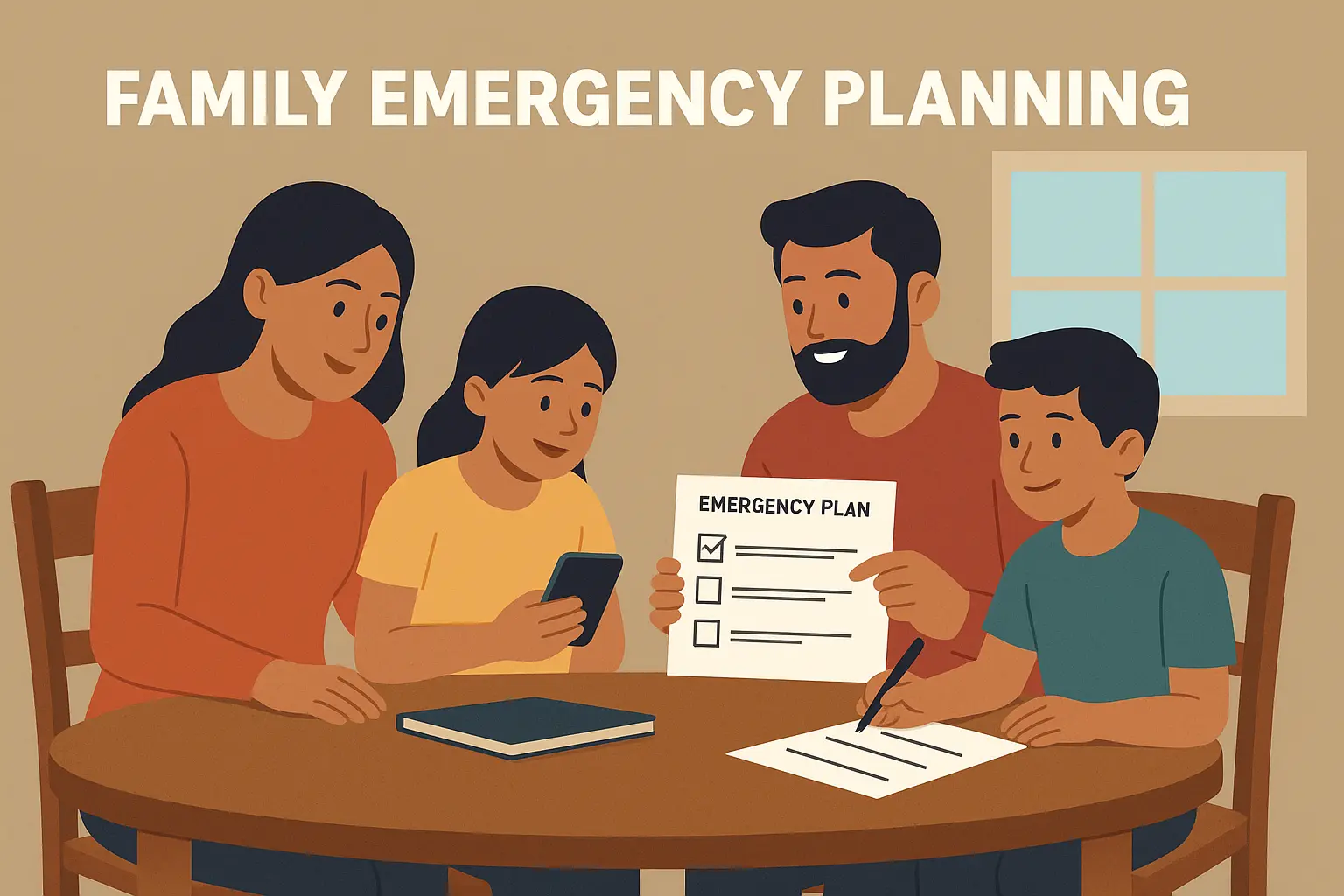Preparedness Begins at Home
Being ready for disasters starts with your family. Every member — from young children to grandparents — can play a role in staying safe and prepared.
Whether it’s a flood, storm, or power outage, having a family emergency plan helps everyone know what to do, where to go, and how to stay connected when something unexpected happens.
As parents or caregivers, you play a vital role in protecting the children in your life and helping them feel confident and safe before, during, and after emergencies.
Why Every Family Needs a Plan
Disasters can happen suddenly — often when families are apart.
A strong plan ensures that everyone knows how to respond, how to reach each other, and where to meet if communication is cut off.
It also reduces panic, builds confidence, and helps children feel secure.
Step 1: Know Your Risks
Start by understanding what kinds of emergencies could affect your area — such as flooding, heavy rain, storm surges, or fires.
Discuss these hazards with your family in simple terms so everyone understands what might happen and what to do.
Tip: Explore the Learn About Hazards section of the Hushiyaaru website to understand the risks in your island or atoll.
Step 2: Make a Communication Plan
If a disaster strikes, your family may not be together.
Having a clear communication plan ensures that everyone knows how to stay in touch and reunite safely.
Who Will We Contact?
Choose one family contact person — ideally someone outside your island or atoll — who can help coordinate updates.
Make sure every family member knows this person’s phone number or has it written down.
Text instead of calling. In emergencies, phone networks may be busy. Text messages often go through faster and help keep lines open for emergency responders.
Keep a contact list in several places — your phone, wallet, school bag, or notebook. Every family member should have their own copy.
Step 3: Decide Where to Meet
Identify safe, familiar, and accessible places where your family can meet if you get separated:
At home: A safe spot inside, away from windows or heavy objects.
In your neighborhood: A nearby school, mosque, or community hall.
Outside your island or town: A relative’s house or another secure location in case you must evacuate.
If you have pets or service animals, include animal-friendly shelters or homes in your plan.
Step 4: Build Your Family Emergency Kit
Your family should have a kit ready with supplies that can last several days.
This includes food, water, a first aid kit, flashlights, extra batteries, and important documents.
For a detailed guide, visit the Build an Emergency Kit page on Hushiyaaru.
Let children help pack the kit — it’s a great way to teach responsibility and calm fears.
Step 5: Practice Your Plan Together
The best family plans are practiced regularly.
Hold short “family safety meetings” every few months to review what everyone should do in different situations.
You can make it fun and interactive, especially for younger children:
Practice calling your emergency contact.
Test alarms and flashlights.
Do a short evacuation drill to your safe meeting point.
Review your emergency kit and replace expired items.
The more you practice, the more confident everyone becomes.
Helping Children Cope
Disasters can be stressful for children. After an emergency, they may feel scared, confused, or sad.
As parents or caregivers, your reassurance helps them recover faster.
Talk openly about what happened and answer questions honestly.
Keep routines — meals, bedtime, and activities — as normal as possible.
Encourage drawing, storytelling, or play to help express feelings.
Praise bravery and remind them that adults are working to keep everyone safe.
If stress continues, seek support from school counselors or community health workers.
Including Everyone in Preparedness
Preparedness is stronger when the whole family participates.
Involve teens in helping younger siblings learn emergency numbers.
Assign simple roles — such as packing supplies or checking flashlights.
Encourage children to share what they learn about preparedness with friends at school.
When children understand preparedness, they become confident messengers of safety — helping to protect their homes and communities.
Your Family’s Safety Checklist
Discuss possible hazards in your area.
Create a family communication plan.
Choose meeting places.
Prepare an emergency supply kit.
Keep copies of important documents.
Practice your plan twice a year.
Preparedness is a Family Habit
Every family in the Maldives can take small steps to stay safe.
By planning ahead, communicating clearly, and supporting one another, you can protect your loved ones when emergencies occur.
